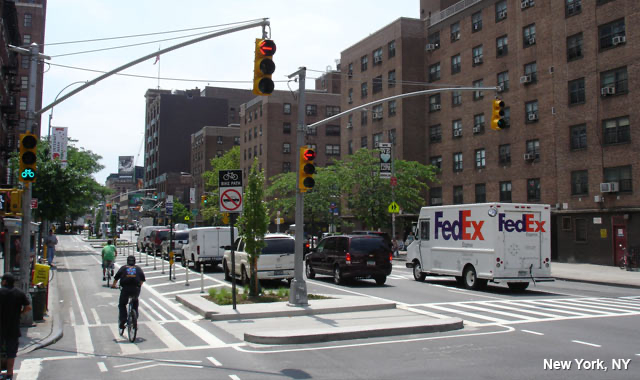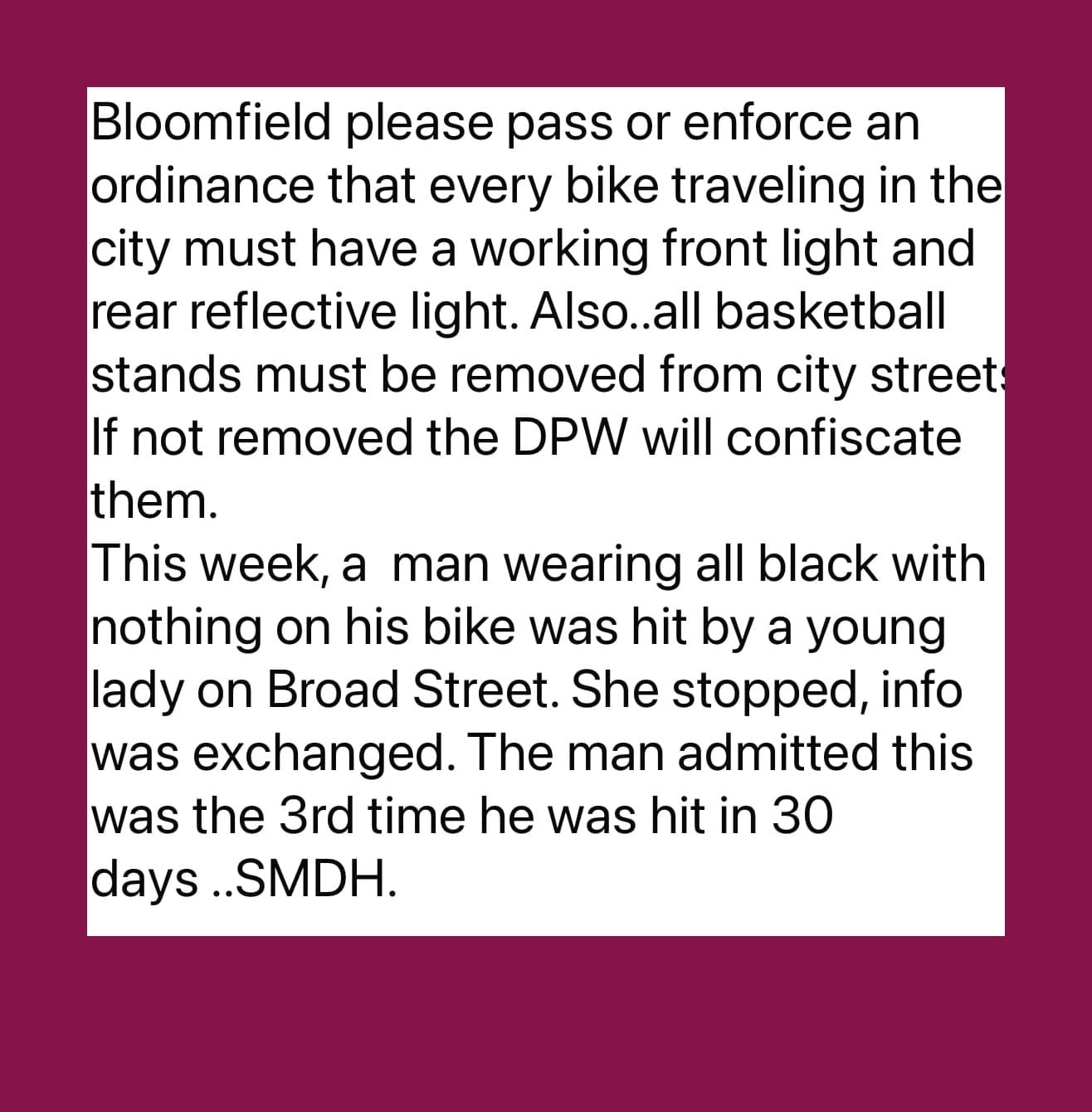
On my neighborhood NextDoorish, someone shared the following idea:

A person who has been hit on their bike by a car on three different occasions and the author of this missive thinks the cyclist is at fault?
As a cyclist commuter, this concerned me, so let’s discuss. I will attempt to be calm.
If you’re driving down Bloomfield Avenue or any major boulevard and find yourself worried about hitting a cyclist because you can’t see us, here’s a suggestion—stop blaming cyclists and start demanding Essex county install protected bike lanes.
This is the most pragmatic solution.
Protected bike lanes (also known as cycle tracks) create predictable, orderly traffic flow. They don’t just protect cyclists—they reduce injuries when crashes occur for everyone on the road. A study by Wolfson (2011) found that when New York City installed protected bike lanes, injury crashes for all road users (drivers, pedestrians, and cyclists) dropped by 40 percent on average and by more than 50 percent in some locations.
If that is not a good enough reason for you, consider this— protected bike lanes can keep you out of legal trouble.
Hitting a cyclist can lead to thousands of dollars in legal fees, potential jail time, and years of consequences. Installing infrastructure that separates cyclists from cars is not only safer for everyone, but it is in the best interest of the driver.
Bicycling isn’t going away.
According to a 2024 report by the Bureau of Transportation Statistics the value of non-motorized bicycles imported into the U.S. has skyrocketed—an increase of over 1,000 percent from February 2020 to February 2023 and total docked bikeshare ridership on six of the largest systems increased 42 percent from March 2020 to March 2023 and in some cities in New Jersey the increase was 55 percent.
More people are cycling, whether it is to save money on car ownership or because they’ve embraced cycling because they are tired of sitting in their car. This isn’t a passing trend; it’s the future. Cities and towns must adapt. New Jersey the most urban town in the United States MUST adapt.
What will stop the chaos on our streets is not cyclists taking side roads or “staying out of your way” or wearing pink so you can see us (half of you are on your phone—so you wouldn’t see us anyway), what will stop the bedlam is road designs that acknowledge and respect everyone who uses them.
Cyclists like me will be on the road, and I won’t ride on side streets just to make your drive more convenient.
Let’s address the issue of “safety.” Not the kind of safety that just has police officers standing around, let’s use data driven solutions not emotion.
Cities around the U.S. have found that protected bike lanes increase bicycle ridership, reduce motor vehicle speeding, reduce crashes and improve people's feelings of safety on those streets. Chicago Department of Transportation, July 2012 - Protected Bike Lanes Fact Sheet
Drivers who claim cyclists should stay off main roads for their own safety aren’t fooling anyone, at least you’re not fooling me. That argument is self-serving nonsense. You’re not concerned about our safety—you’re worried about your own convenience.
Safety isn’t a justification for maintaining car-centric roads that actively endanger cyclists’ lives. If you truly care about safety, join us in advocating for infrastructure that benefits everyone— protected bike lanes, safer crosswalks, and public spaces that aren’t dominated by cars.
If safety doesn’t motivate you, consider this: protected bike lanes might save you from a costly legal battle.
I’ll keep riding on Bloomfield Avenue and Broad Street because I won’t disappear to accommodate your car addiction. And if you crash into me and I die, I want everyone to see what you’ve done. I don’t feel safe cycling on roads where there’s no one around. I’m not a big person, and my martial arts skills are a bit rusty.
As a bigger person—or a guy—you might feel fine taking a side road where no one’s watching, but it doesn’t feel fine to me. Expecting me to take that empty side road is a form of gender bias, and I refuse to let your bias perceptions dictate how I move through the world.
It’s time to demand better roads that serve everyone—cyclists, pedestrians, and yes, even drivers. Cyclists are part of transportation, whether you like it or not.
So, if you want to stay out of jail and avoid being “inconvenienced,” demand protected bike lanes. It’s the safest, smartest solution for everyone.
